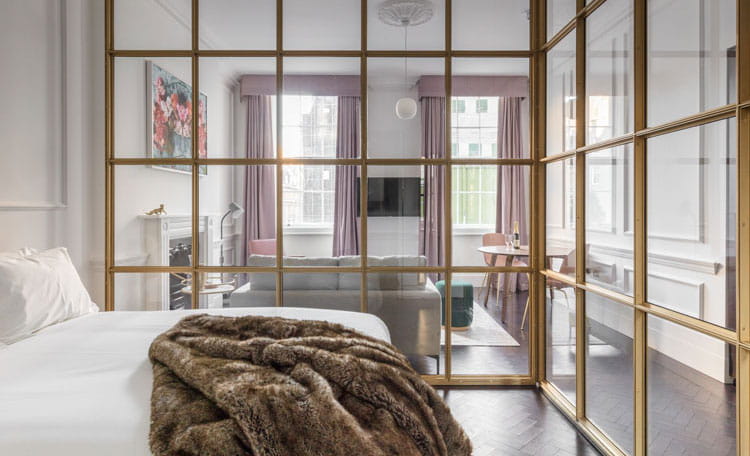The hotel activity shows signs of recovery ahead of uncertain summer due to the evolution of the pandemic
- The summer should clear some of the doubts shown by the main indicators of the Hotel Barometer. Although the end of the semester continues to evolve downwards compared to the first half of 2020, June has shown signs of recovery with an occupation close to 40%, compared to 18% that was registered in the whole of Spain in June 2020.
- At the end of the first half of the year, the main indicators in Spain as a whole show occupancy of 28% (10% less than in the first six months of 2020), while RevPAR (revenue per available room) was €25, 14% less than last year. ADR (average daily price per room) kept at 87 €, only 4% less than last year.
- The hotel sector is recording a growing activity of reservations in the holiday segment thanks to domestic tourism and the gradual opening of borders from the main source markets and nearby countries. Despite this, the evolution of the Delta variant of Covid may put at risk the recent gains registered in June.
Madrid/Barcelona, July 27, 2021 - The Barometer of the Hotel Sector in Spain, jointly prepared by STR and Cushman & Wakefield, shows a trend that points to recovery during June, although data accumulated in the first half of the year still shows decreases in the main indicators. Since the 2020 figures include the pre-pandemic months of January and February 2020.
Comparing the months of June 2020 vs June 2021, a positive evolution is shown since, in the whole of Spain, occupancy has grown by 119% (40% in 2021 vs. 18% in 2020), RevPAR grew by 211.7% (€ 41 vs € 13) and, on the other hand, the ADR also increased by 42% (€ 102 vs. €72). The recovery of occupancy has been outstanding in holiday or mixed destinations such as the Balearic Islands and Malaga. Although the numbers are still low compared to 2019, it is a positive trend that could be confirmed during the summer.
Employment in the first half of the year as a whole is down 10% compared to 2020
The occupancy data for the first half of the year reflect the consequences of the pandemic on tourism and hotel activity. Occupancy remains at 28% in these first six months, a figure that reflects only the data of the hotels which remained open. Currently, the percentage of establishments that are closed remains high, especially in cities such as Barcelona.
The differences in occupancy between leisure destinations and cities are not very significant, although Zaragoza registers the highest occupancy (39%) while the Canary Islands shows the lowest (25%). The Balearic Islands is the only destination with a positive evolution during the first six months, with an occupancy of 26% compared to 21% last year, which represents an increase of 25%.
For César Escribano, STR's Country Manager for Spain and Portugal, "The sector is making enormous efforts to adapt to an ever-changing environment both for domestic and international demand. The restrictions imposed by in main source markets together with the measures against the pandemic from the Regional Governments are creating a situation where there is either uptake or a cancelation wave following the announcements of new measures. An example of this is the increase by 12 points (from 33% to 46%) in one week of bookings for the coming 90 days in the Balearic Islands, mainly due to the effect of the lifting of restrictions in the United Kingdom. In urban destinations, we also observed a large increase in bookings for the coming 90 days (Madrid +221%, Barcelona +421%) due in part to the very extreme situation we started from in 2020."
For his part Bruno Hallé, partner and co-director of Cushman & Wakefield Hospitality in Spain, “right now there is no unified reopening strategy since the pandemic is not over yet and the Delta variant has caused new cancellations. We expect the summer to be reasonably good in peninsular holiday destinations, while access to the islands still needs to be safely reopened. In urban destinations such as Madrid and Barcelona, the recovery is expected to take longer, with the levels of 2019 being progressively met by 2023, according to data from the hoteliers themselves”.
The ADR stands at €88, only 4% less than in the first half of 2020
The average daily price demonstrates the efforts of the hotel industry to maintain a reasonable pricing policy in the face of falling activity. The ADR in the whole of Spain stood at € 88 during the first six months, slightly below last year (€ 91).
The highest prices per room are found in Marbella (259€), The Balearic Islands (153€), Barcelona (83€), and Madrid (81€). At the low end, we find Zaragoza (52€), Bilbao (59€), and Granada (60€). In the comparison between 2020 and 2021, we also find the biggest price increases in Marbella and the Balearic Islands driven by the recovery during spring and the forecasts of a summer that could be better than in 2020.
For Albert Grau, partner and co-director of Cushman & Wakefield Hospitality in Spain, "the indicators are a good representation of the current situation, but in such a changing environment the industry is focused on adapting to offer high quality and reliable service and to ensure the viability of companies. We expect operations to recover in a phased manner over the coming months when travel restrictions are eased."
RevPAR remains at the limit of € 25, 14% less than in the first half of 2020
Revenue per available room (RevPAR) continues its downward trend during the first six months of the year, with an average of €25. This trend indicates that it reached its lowest point in May of this year, while June has already registered a RevPAR of € 41 in the whole of Spain, 42% more than in June last year. The highest RevPAR's are found again in Marbella (70€) and the Balearic Islands (41€) while in the lower part is Bilbao (16€), Granada (18€), and Zaragoza (20€). In this indicator, Madrid with € 24 surpasses Barcelona, with € 22.
It should be remembered that, until March 10, 2020, hotel industry activity was normal without the effects of the pandemic. The weight of this normal activity at the beginning of 2020 translates into a negative evolution shown during the first half of this year.
The Hotel Sector Barometer collects data from 1. 200 hotels and around 150,000rooms in the Iberian Peninsula. The study is the result of the alliance between STR, a global provider of benchmarking, analytics and market knowledge, especially in the hotel sector, and Cushman & Wakefield Spain, a leading global firm in real estate services.




